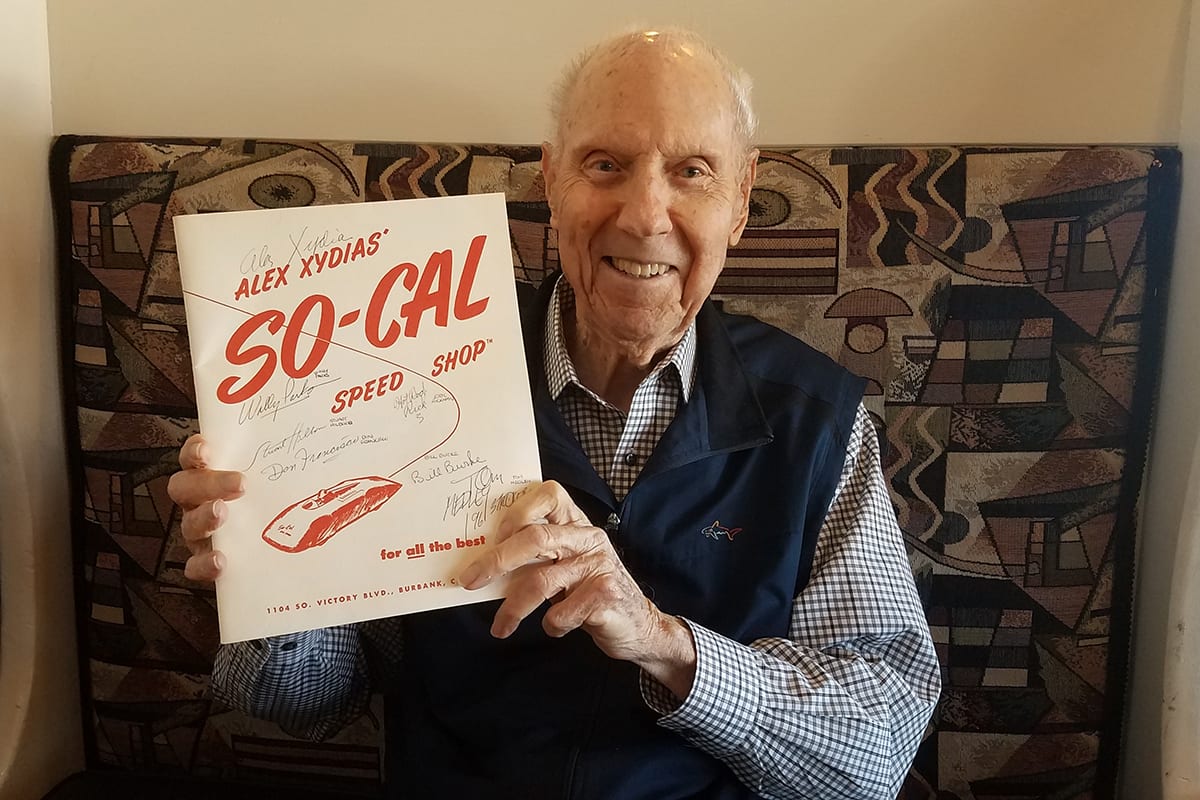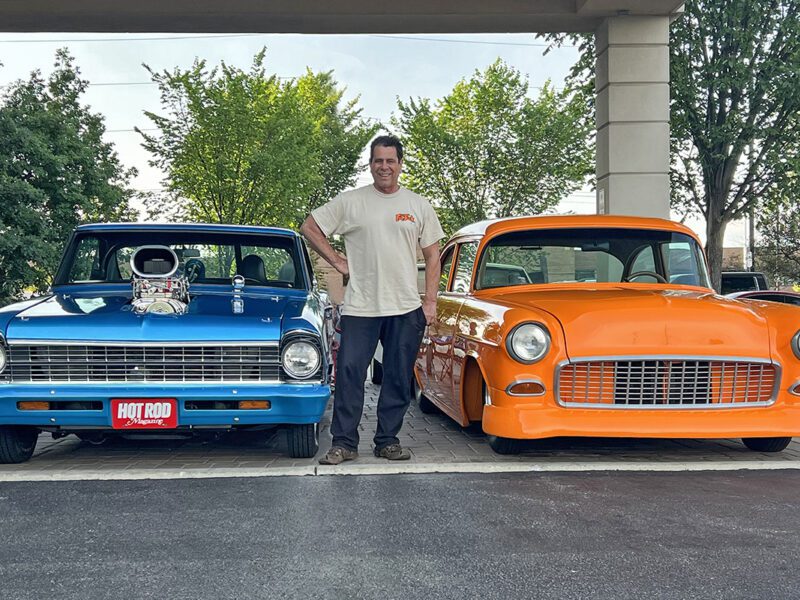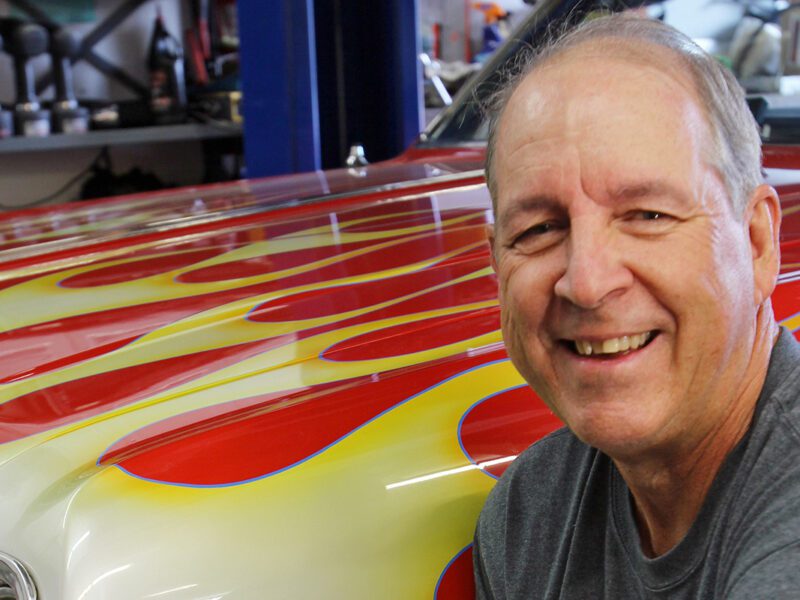5 Minutes With Alex Xydias
Alex Xydias’ contribution to hot rodding is unrivaled. During his seven-plus decades in the industry, there’s little he hasn’t done. He founded the original So-Cal Speed Shop in 1946. His iconic lakester graced the cover of Hot Rod. He produced motorsports films. Edited both Car Craft and Hot Rod Industry News. Pioneered the SEMA Show. And, along with Pete Chapouris, re-launched So-Cal Speed Shop, introducing the brand to a new generation of rodders.
But Alex has just checked off arguably his most impressive feat. He turned 100 on March 22. That also means he’s just 2mph shy of being the only member of the 100/200 club, as he hit 198mph at Bonneville curled up inside in a Flathead-powered belly tank. (He does contend he topped 200 exiting the timing zone.)
As rodding’s most senior statesman, it made sense to dial him up and get his thoughts on where’s he’s been and what the future holds.
Goodguys: Your life has revolved around cars, was there anything in your parents’ background that pointed you in that direction?
Alex Xydias: Not really. I was born in LA in 1922, and my father was a Hollywood film producer and nickelodeon movie house owner. He specialized in low-budget silent Westerns. After my parents split my mother struggled to make ends meet. Still, I had a pretty normal childhood.
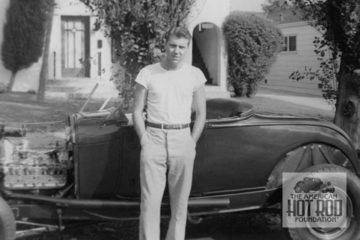 GG: Where did the interest in hot rods come from?
GG: Where did the interest in hot rods come from?
Xydias: It came out the exhaust! I just loved the prefect thump, thump, thump sound of those steel-wool-packed mufflers. So, when I got my first hot rod in high school, a ’29 Ford roadster with a milled head and lightened flywheel, it had perfect-sounding mufflers, too.
GG: And that was the start?
Xydias: After graduation, I got a job in a gas station and built a ’34 three-window coupe. I joined The Wheelers car club and visited the dry lakes, where I met Veda and Karl Orr and Vic Edelbrock.
GG: Then the war intervened. How did being in the military affect your hot rod interests?
Xydias: During the war, all we talked about were cars. Once on furlough, I drove up to the San Fernando Valley to watch the street races. I was shocked at how fast the cars ran! That inspired me to open So-Cal Speed Shop in Burbank the day I was discharged.
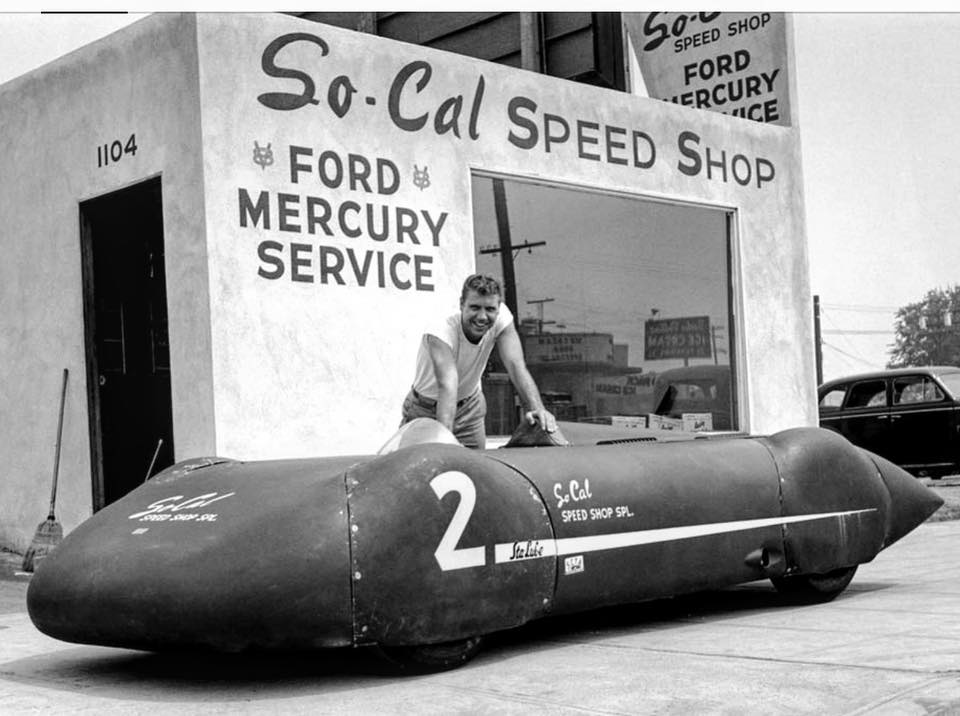 GG: How did the So-Cal racing team come about?
GG: How did the So-Cal racing team come about?
Xydias: I figured the most effective way to promote a speed shop was racing. We put together some of the fastest hot rods around. My V8-60-powered So-Cal belly-tank lakester hit 136mph in 1948. It ended up on the cover of Hot Rod.
Later, I teamed up with Dean Batchelor to design a streamliner for Bonneville. In 1952, the car topped 210mph, running an Edelbrock-equipped Mercury V8. This led to a multi-car race team. We set many records and were named Mechanix Illustrated magazine’s top racing team in 1952.
GG: What led you to close So-Cal Speed Shop?
Xydias: Our shop was focused on Flathead speed parts. When overhead-valve engines began to outperform the Flatheads, we began losing out to the OHV crowd. I closed the shop in 1961.
GG: Then you became a documentary filmmaker, perhaps channeling your father’s skills?
Xydias: Yes, I created documentaries about motorsports – Bonneville, Sebring, Pikes Peak, the lakes, etc. – and showed them at schools and civic auditoriums. It worked out well, but in 1965 I was recruited to become editor of Car Craft magazine.
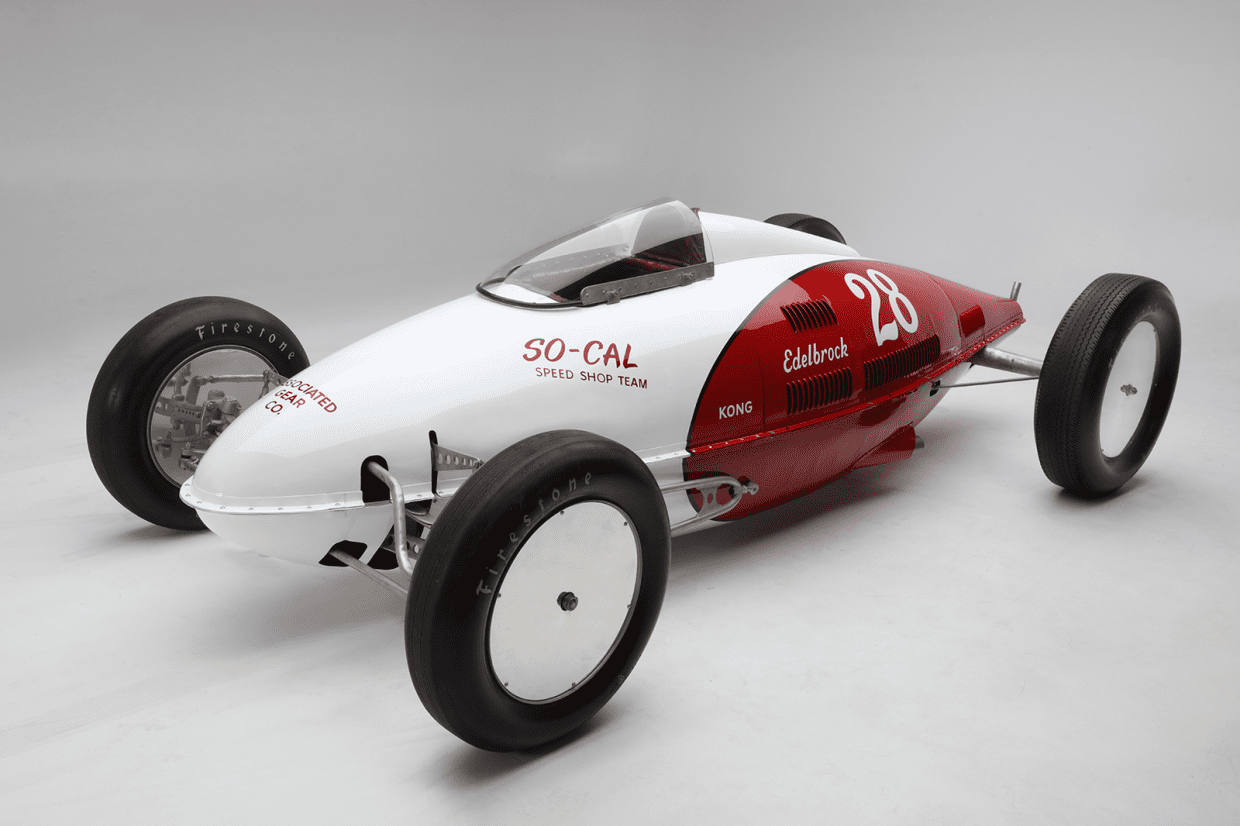 GG: After Car Craft, you joined Hot Rod Industry News?
GG: After Car Craft, you joined Hot Rod Industry News?
Xydias: Yes, and it was at HRIN that we helped start the SEMA trade show in 1967. SEMA originally stood for Speed Equipment Manufacturing Association. It’s grown into one of the largest trade events in the world.
From there, I joined Mickey Thompson in 1977 to help organize his SCORE equipment trade shows, a spinoff of his SCORE off-road racing series. I did this for a decade before sort of retiring.
GG: It was a short-lived retirement, right?
Xydias: My friends Bruce Meyer and Pete Chapouris teamed up to restore my So-Cal Speed Shop belly tank. That gave us the idea to resurrect So-Cal Speed Shop. Working with Pete, we brought the brand back to life. And boy, it really took off!
GG: Now you’re 100 years old! How does it feel? I can’t imagine…
Xydias: Ha! I can’t imagine it either. I don’t feel 100. I’ve been fortunate to have good health and so many great friends, from the early Bonneville days and later Pebble Beach. It keeps you young.
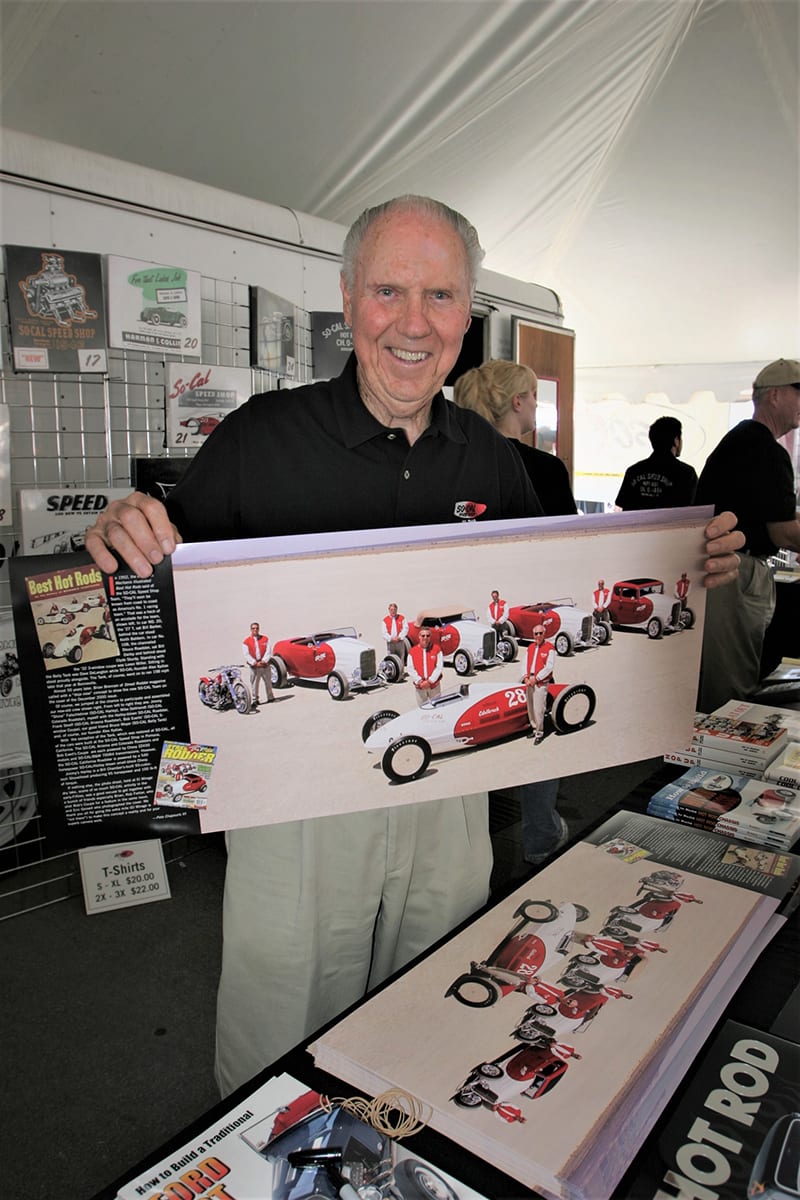 GG: Any secrets to a long life?
GG: Any secrets to a long life?
Xydias: Funny, I tell my friends it’s because I grew up in California with all the fruits and vegetables available, all covered in pesticides. Maybe the pesticides helped! I had so many incredible friends, which means you have a much better life. And I can’t forget my family. My wife Helen, who passed away just few years ago, two daughters and a son, seven grandchildren, and 10 great-grandchildren.
GG: Which of your accomplishments stand out to you?
Xydias: Wow, there have been so many. But helping organize and participate in the first Bonneville in 1949 and driving that belly-tank lakester still stand out to me.
GG: What about the future of hot rodding?
Xydias: I think it’s in good shape. I heard the recent Grand National Roadster Show was very successful. Large crowds, great cars. One of the biggest hits, I’m happy to say, was the So-Cal Speed Shop exhibit with our restored race cars. And Pebble Beach will feature ’32 Ford roadsters this year.
GG: Any final thoughts?
Xydias: I always say that I don’t live in the past, but that the past means a great deal to me.

